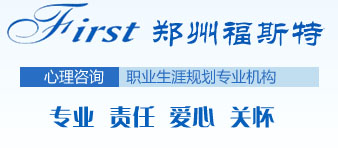“在身心灵的各个层面中,身体是最踏实、诚实可信赖的。从身体入手,将是我们了解自我的最确实的捷径。我们远久以来莫名的委屈、愤怒、压抑、痛苦、彷徨、绝望,都一 一在身体里留下了印记。这些印记既是我们的癜痕,更是我们涅盘重生的指路牌。”
舞动治疗(DMT)是什么?
舞动治疗是一种非语言层面的心理治疗,通过舞蹈表达并探索意识和潜意识中的感受。在1950年左右,由美国舞者玛丽安·雀丝(Marian Chace)创立。
在舞动治疗中,我们专注于非语言层面。其实,在我们的日常生活中,80%都是非语言层面的沟通。而这也就意味着,我们需要更加了解我们的身体。我们的身体有它自己的记忆。通过舞动,一些深深埋藏在身体里的记忆将会浮上水面。
事实上,从童年时期开始,我们就已经如同收集印戳般开始积累所谓的“情感印记”了。这些“印记”就留在我们的肌肉和身体的各个部位中。很多人选择不去表达这些被隐藏的感受,从而产生了各种身心上的症状。从此,病痛或各类成瘾症状便不离他们左右。
舞动治疗是如何工作的?
1949年,美国心理学家威廉·赖希(Willem Reich)开始和玛丽安·雀丝(Marian Chace)进行精神治疗干预方面的尝试。他们相信,这样做能够解开肌肉组织的僵硬,化解积累在肌肉中的想法、概念和感受。
通过舞蹈动作,病人开始获得骨骼肌肉的活动力。而通过观察阻断情感表达的身体部位、呼吸模式和紧张水平等,治疗师则了解到该如何进行一连串的身体动作,为情绪反应做好铺垫准备。但这些并不是学习了一个动作就能发生的。当病人做好准备,允许自己去体验身体的动作时,改变才会发生。(Chaikiln&Schmais 1979年第17页)
舞动治疗的重点是帮助来访者改变固有模式。在舞动中,治疗师一直在观察来访者的重复模式还有他/她的动作语言。一旦治疗师了解了来访者的固有模式和运动能力,就可以开始着手改变这些模式。在舞动治疗理论中,任何一个动作上的微小改变都会改变整个身体。而认知和行为上的变化也会随之而来。
最终,身体将会苏醒,我们可以帮助身体清理一直以来所累积的“情感印记”,而那些压抑自己想法和感受所带来的损伤,也会随之慢慢疗愈。
玛丽安·雀丝(Marian Chace)也应用到了美国哲学家、社会学家和心理学家乔治·赫伯特·米德(George Herbert Mead)的哲学思想。“自我”(“I”)是指人们出生时就有的“真实自己”。而“客我”(“Me”)则指在人生中慢慢形成的那个自己。
TA交互分析理论创始人埃里克·伯恩(Eric Burn)也会谈到这个概念,“自由的小孩”(“free child”)和“适应性小孩”(“adaptive child”)。在工作坊中,治疗师经常会使用舞动治疗理论作为观察的工具,而TA交互理论则是很好的分析方法。很多时候,我们会发现,自己一直以来学习到的模式都是“客我”模式。而舞动治疗,就是通过治疗师的帮助,让来访者重归“自我”。
玛丽安·雀丝(Marian Chace)和玛丽·斯塔克斯·怀特豪斯(Mary Starks Whitehouse)也会使用意象和象征:
舞动治疗使用“舞蹈表达”作为一种手段(这意味着我们并不需要知道如何跳舞)。通过这样的方式,我们在舞动时常常能得到一些意象。其中一些意象与我们的潜意识有关。就像晚上我们梦中的意象,这样的意象被称为象征。通过分析这些象征,我们可以了解梦想要告诉我们什么。因此,我们也可以使用在舞蹈中得到的意象,一些有价值的信息可能就包含其中。
为什么你需要舞动治疗?
舞动治疗是非语言层面的交流。它可以带领我们从意识层面行至潜意识层面,从而帮助我们清理身体中因为堵塞或限制而造成的情绪。随着重获自由和积极经验的到来,我们的身体被重新编程。而新的意识和觉知,将让我们在面对生活内外的冲突矛盾时,更加游刃有余。
What is Dance Movement Therapy (DMT)?
Dance Movement Therapy is a non-verbal psychotherapy which explores and expresses conscious and unconscious feelings through dance.
In DMT we focus on the nonverbal language. 80% of our communication is nonverbal, which means we need to be aware of our body. Our body has its own memories and through dance some memories that were deeply hidden in the body, will appear. From our childhood we collect "emotional stamps" and those stamps are stowed in our muscles and other parts of our body. A lot of people don't express those feeling and they develop all kinds of psychosomatic symptoms which make us ill or make us develop all kinds of addictions.
Around 1950 it was Marian Chace who developed and founded DMT.
How does DMT work?
Willem Reich (1949) and Marian Chace were experimenting with psychomotor therapeutic intervention as a way to unlock thoughts, ideas, and feelings that they believed were held in the musculature (muscle tissue) in the form of rigidness.
Through dance action, the patient gains motility of skeletal musculature. Recognizing the body parts, breathing patterns or tension levels which block emotional expression provides the therapist with clues to the sequence of physical actions that can develop readiness for emotional responsiveness. But it is not merely learning a movement that leads to change. The change occurs when the patient is ready to allow himself to experience the action in his body. (Chaikiln & Schmais 1979 p 17)
DMT focuses on helping the clients to change patterns. During the dance the therapist observes what the client’s repeating patterns and his/her movement vocabulary are. Once the therapist knows the client’s patterns and movement abilities the therapist can start to change those patterns. DMT says that every small change on movement level changes the whole body. It also creates changes on cognitive and behavioral level.
The results are that the body wakes up and we can help the body clean itself from all the emotional stamps and heal the damage we made by not expressing our thoughts and feelings.
Marian Chace was also working with the philosophy of George Herbert Mead. The "I" means the ‘authentic Self’ when born. The “Me” is who I became during the course of life.
Erik Burn (founder of TA; Transactional Analyses) talks in this matter about the ‘free child’ and ‘adapted child’. Quite often the patterns that we learn are the "Me". In DMT the therapist brings the client back to the "I".
Marian Chace and Mary Starks Whitehouse used to work with images or symbols:
DMT uses ‘dance expression’ as a technique (which means that we don't need to know how to dance). This way we often get images while dancing. Some of those images are related to our subconscious. We then can call them symbols. Just like the images in our dreams at night, which we also can use as symbols. By analyzing those symbols we may understand what our dreams want to tell us. In this way we also can use the images that we get during the dance, which might contain valuable information.
Summary
DMT is about non-verbal communication. It brings us from the conscious level to the subconscious level and from there helps us to clean our body from emotions caused by blocking or limiting experiences. With newly gained freeing and positive experiences the body is reprogrammed. New conscious insights will make it easier to deal with both inner and outer conflicts in life.
An Introduction to the Therapist:
Zvika Frank
Member of the Dutch Association for Creative Art Therapy
Registered Dance Movement Therapist of American Dance Therapy Association (ATDA)
Dance Movement Therapist of the Delta Psychiatric Centre in Rotterdam, the Netherlands
Member of the committee of the Master Program of Dance Movement Therapy at Codarts, Academic of music and dance/ therapy, developing the content of this program.
Author:Zvika Frank / Translator:Amber
作者:小老黑跟你谈心理
文章转自知乎,如有侵权请联系删除,谢谢。


郑州心理咨询中心|心理医生|青少年心理咨询—河南郑州福斯特心理咨询中心 版权所以 未经授权禁止转载、摘编、复制或建立镜像
心理咨询电话0371-63310633、86172899